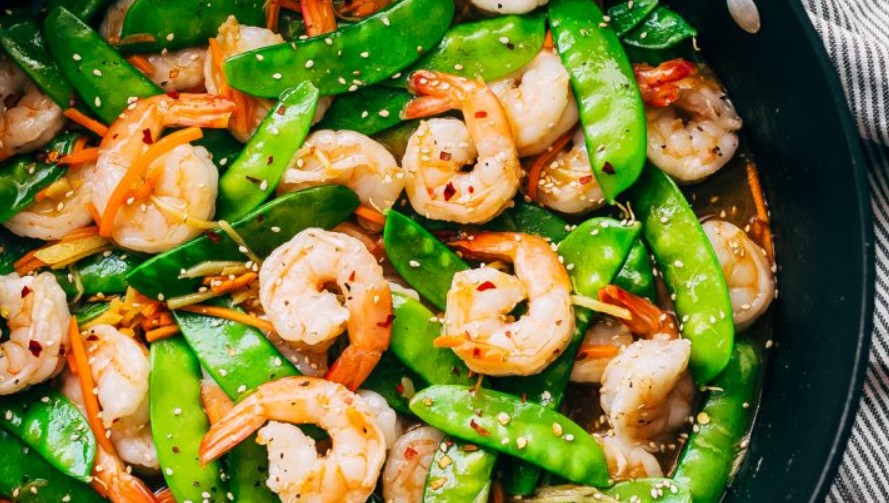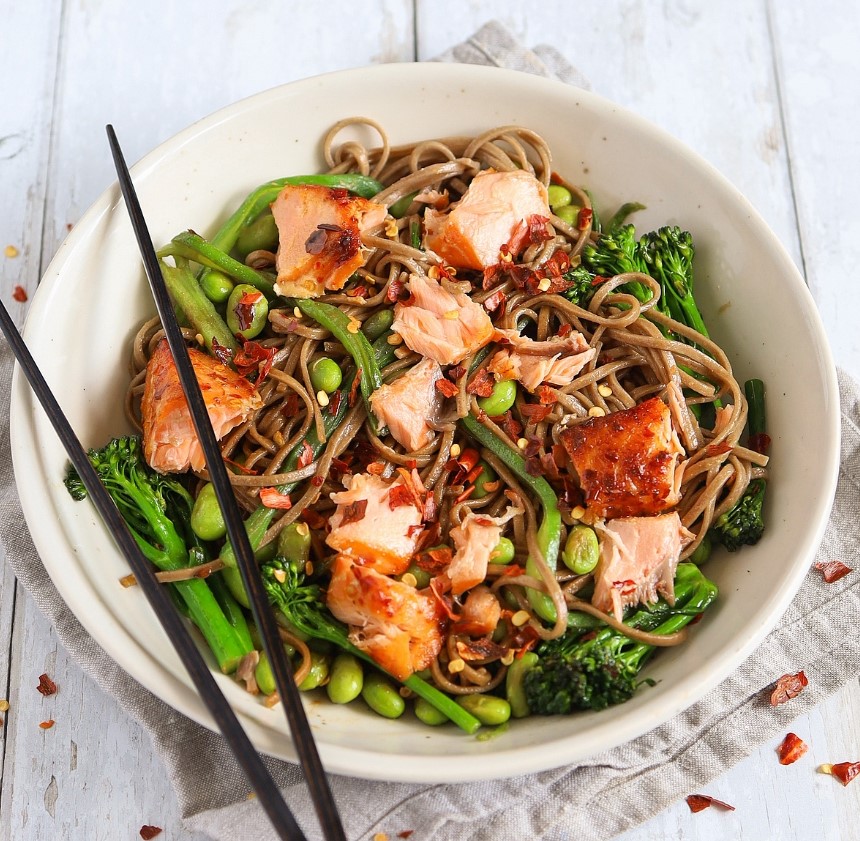At Budget Bytes, we are fans of versatile recipes that can accommodate a variety of ingredients. A basic vegetable stir fry serves as an excellent example. Whether you’re looking to utilize leftover vegetables from your freezer or opting for a bag of frozen stir fry veggies, a speedy and effortless vegetable stir fry can be your go-to dinner choice. In addition to the straightforward recipe provided below, I have numerous suggestions for additional ingredients and flavor variations to keep things interesting!
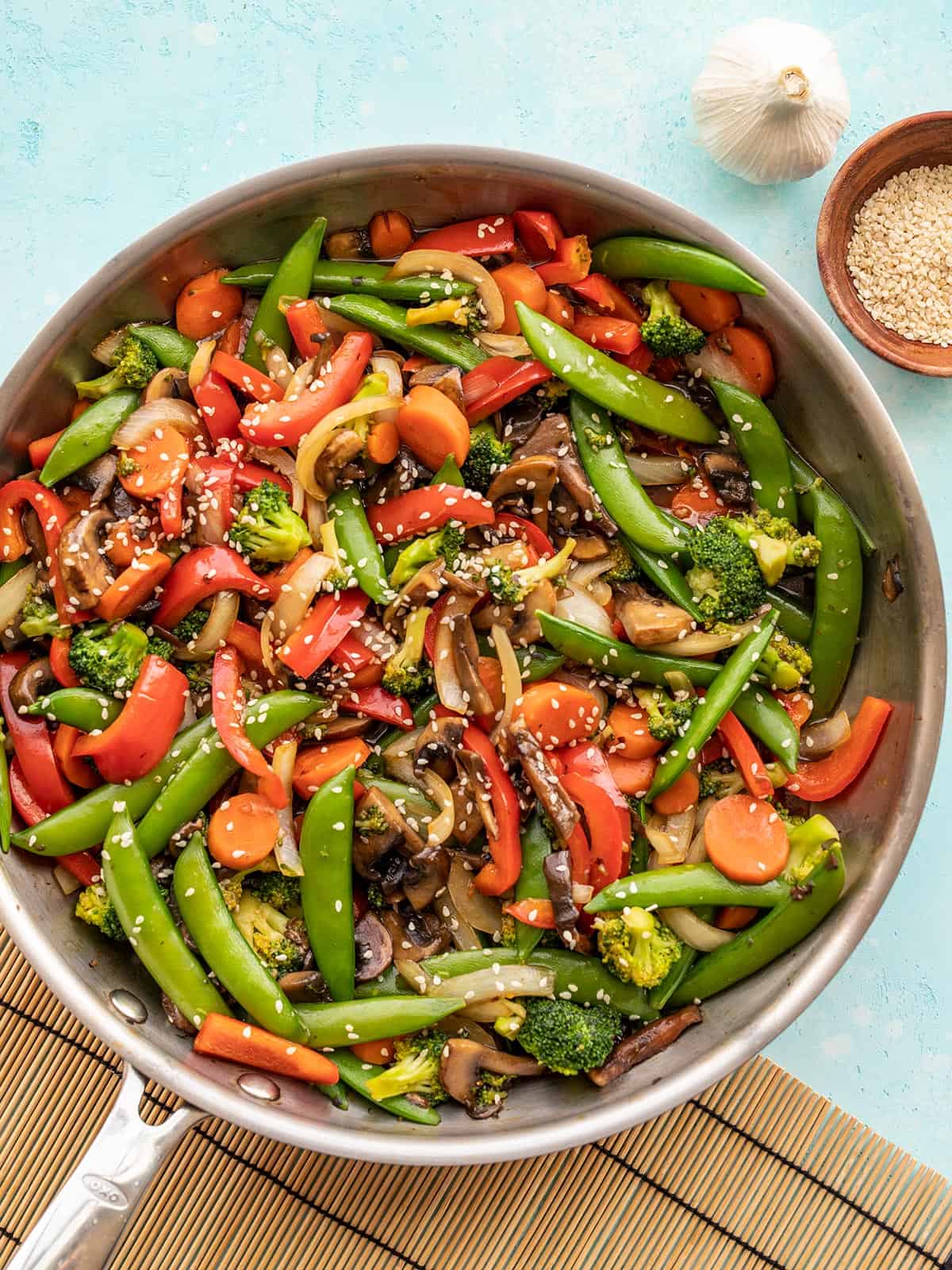
What Vegetables are Good for Stir Fry?
When preparing a vegetable stir fry, it is crucial to incorporate a diverse range of colors and textures. In order to achieve this, I opted for onions, mushrooms, red bell pepper, broccoli, and carrots. However, there are numerous other vegetables that are excellent additions to a stir fry:
I have to say, this stir fry sauce is by far the best I’ve ever made! Normally, I find toasted sesame oil to be overpowering in sauces, but the combination of ingredients in this recipe creates a perfect balance and harmony. Additionally, I really appreciate the instructions you provided on customizing the dish by suggesting the order in which vegetables should be added to the pan.
erin
Other Stir Fry Add-ins
Aside from vegetables, various other ingredients can be incorporated, such as:
Customize the Sauce
Below is a simple recipe for a basic brown stir fry sauce. However, feel free to personalize it to suit your preferences as there are endless possibilities for customization. Consider the following options:
The Trick to Good Stir Fry at Home
When preparing stir fry at home, keep in mind these two crucial tips:
To ensure proper cooking, opt for a large wok or skillet and set the heat to high. If using a smaller pan, there won’t be sufficient surface area for steam evaporation, resulting in soupy vegetables. Similarly, inadequate heat will lead to slow steam evaporation and the same undesirable outcome.
Make sure not to overcook the vegetables. Aim for a tender-crisp texture with vibrant colors. If needed, you can cook them a bit more after adding the sauce. However, be cautious not to cook them excessively in the initial stages, as this will result in dull-colored, limp vegetables.
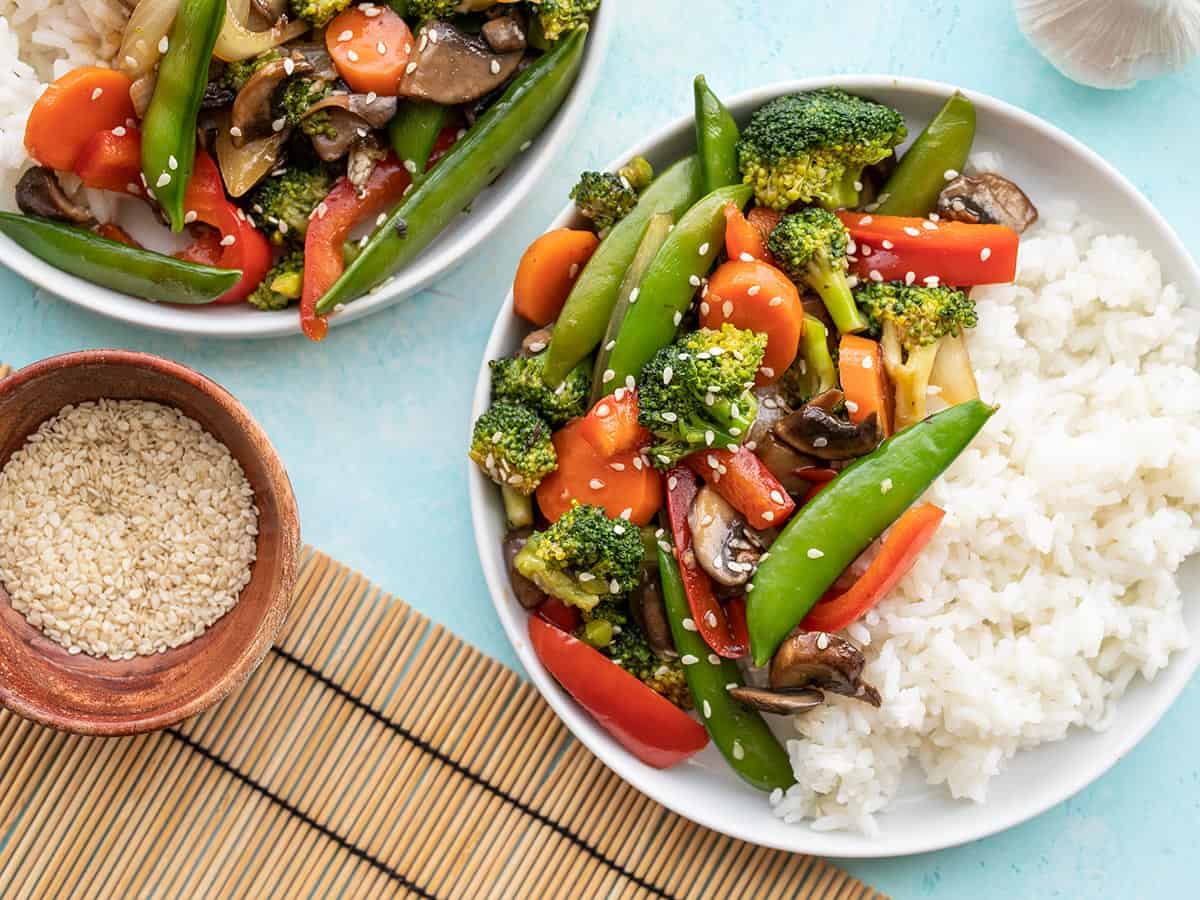

How to Make Vegetable Stir Fry – Step by Step Photos
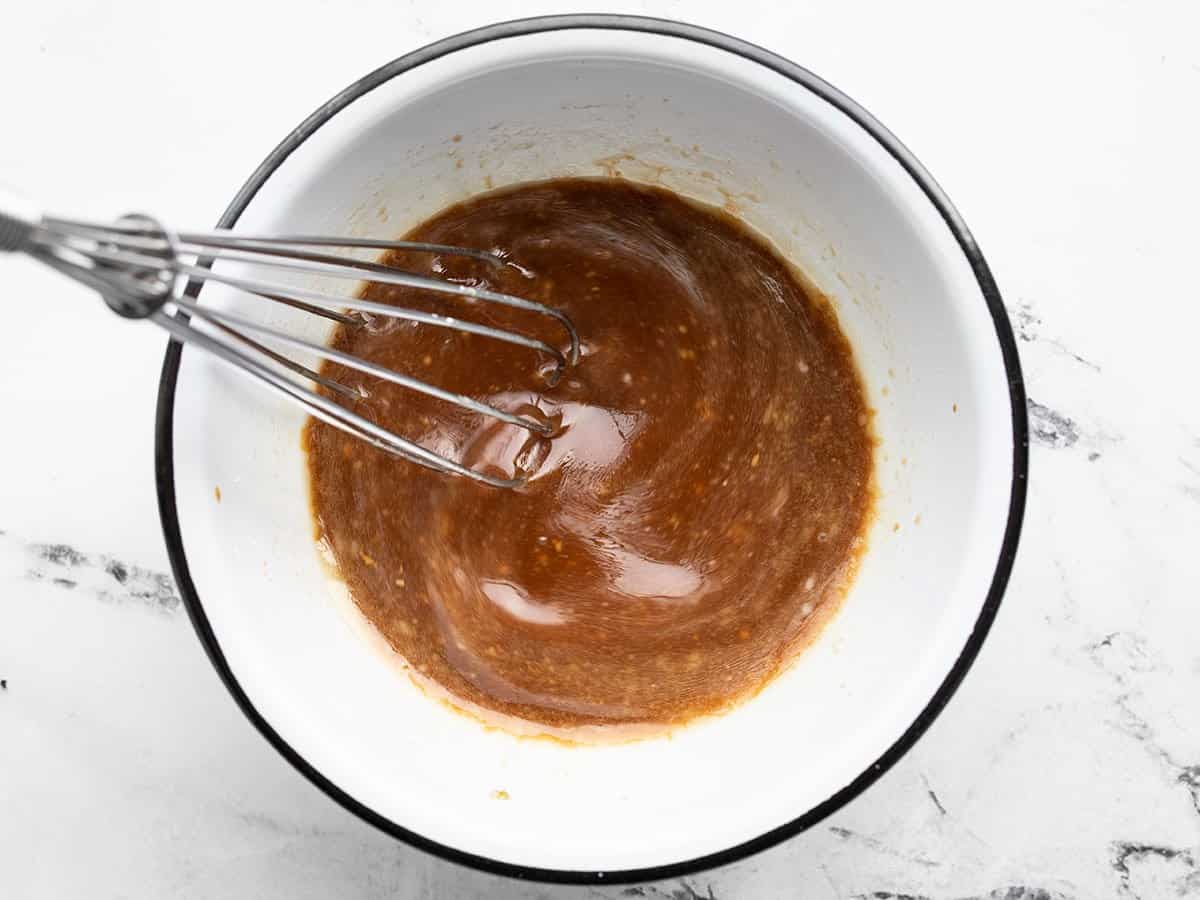
Prepare the stir fry sauce in advance to allow the flavors to blend and ensure it is readily available when needed. As vegetable stir fry is a quick process, it is essential to be prepared. In a bowl, mix together 1/4 cup soy sauce, 1/4 cup water, 2 tablespoons of brown sugar, 2 cloves of minced garlic, 1 teaspoon of grated fresh ginger, 1 teaspoon of toasted sesame oil, and 1 tablespoon of cornstarch. Whisk the ingredients until well combined and then set aside.
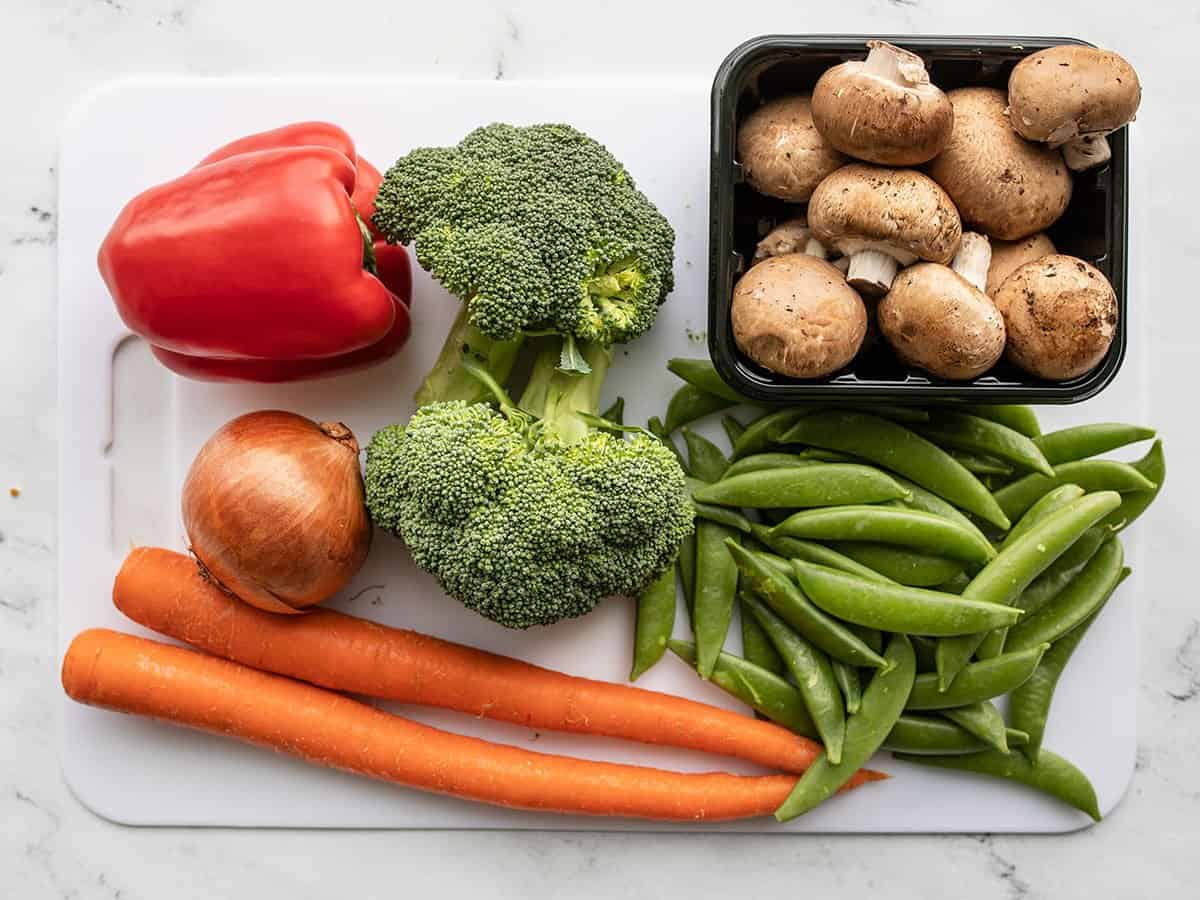
To create my stir fry mix, I included 1 small yellow onion, ½ lb. broccoli, 2 carrots, 8oz. mushrooms, and 8oz. sugar snap peas. Feel free to customize the vegetable combination to your preference, but aim for a diverse selection of colors and textures. It is recommended to have approximately 8 cups of vegetables once they are chopped.

Cut the vegetables into evenly sized pieces, but make an exception for the carrots as they take longer to soften; they can be cut smaller than the other vegetables.
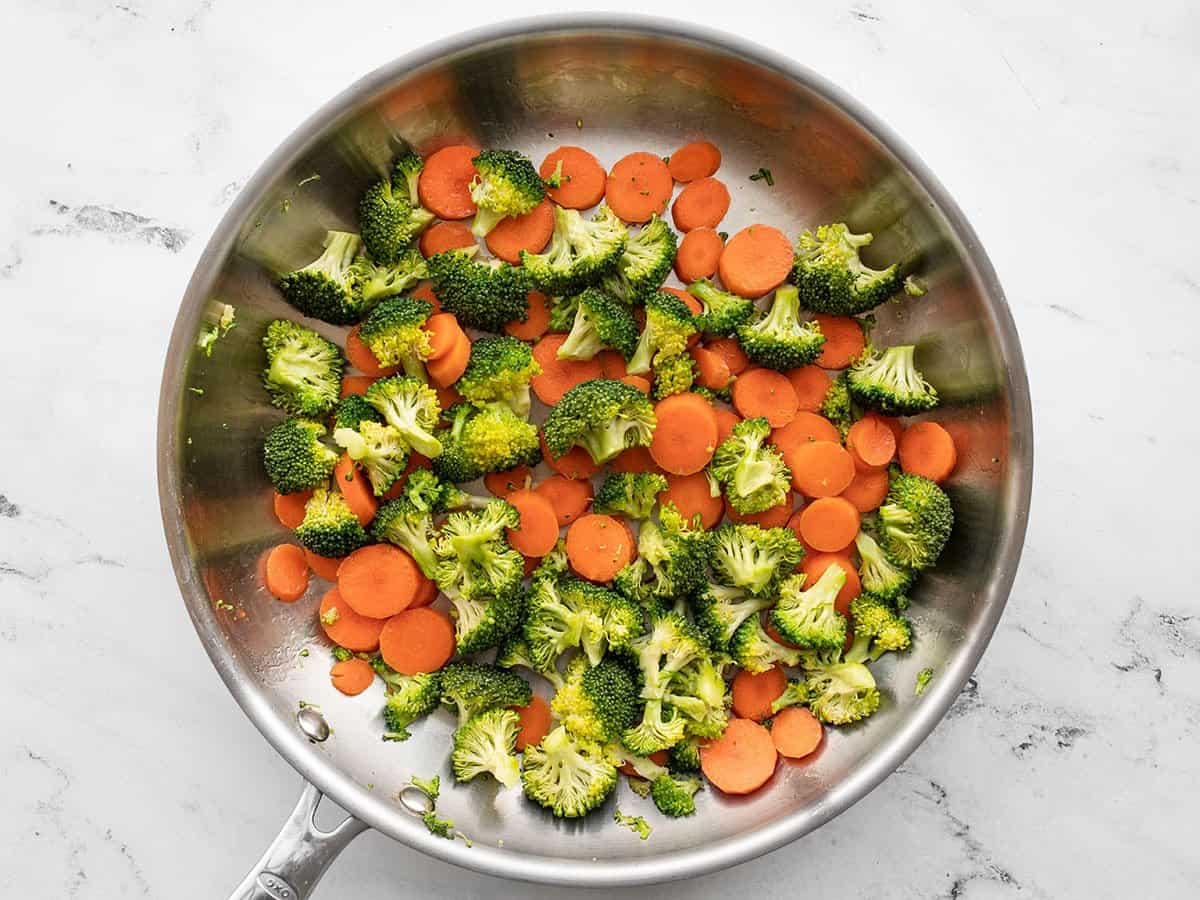
Begin by pouring 2 tablespoons of cooking oil into a generously sized skillet or wok. Heat the pan over medium-high heat until it reaches a high temperature. When the pan is sufficiently hot, introduce the toughest vegetables initially, such as carrots and broccoli, as they require more time to become tender. Vigorously stir the vegetables for approximately one minute, or until you notice the broccoli transforming into a vibrant green hue. As you gradually incorporate additional vegetables, bear in mind that they will continue cooking.
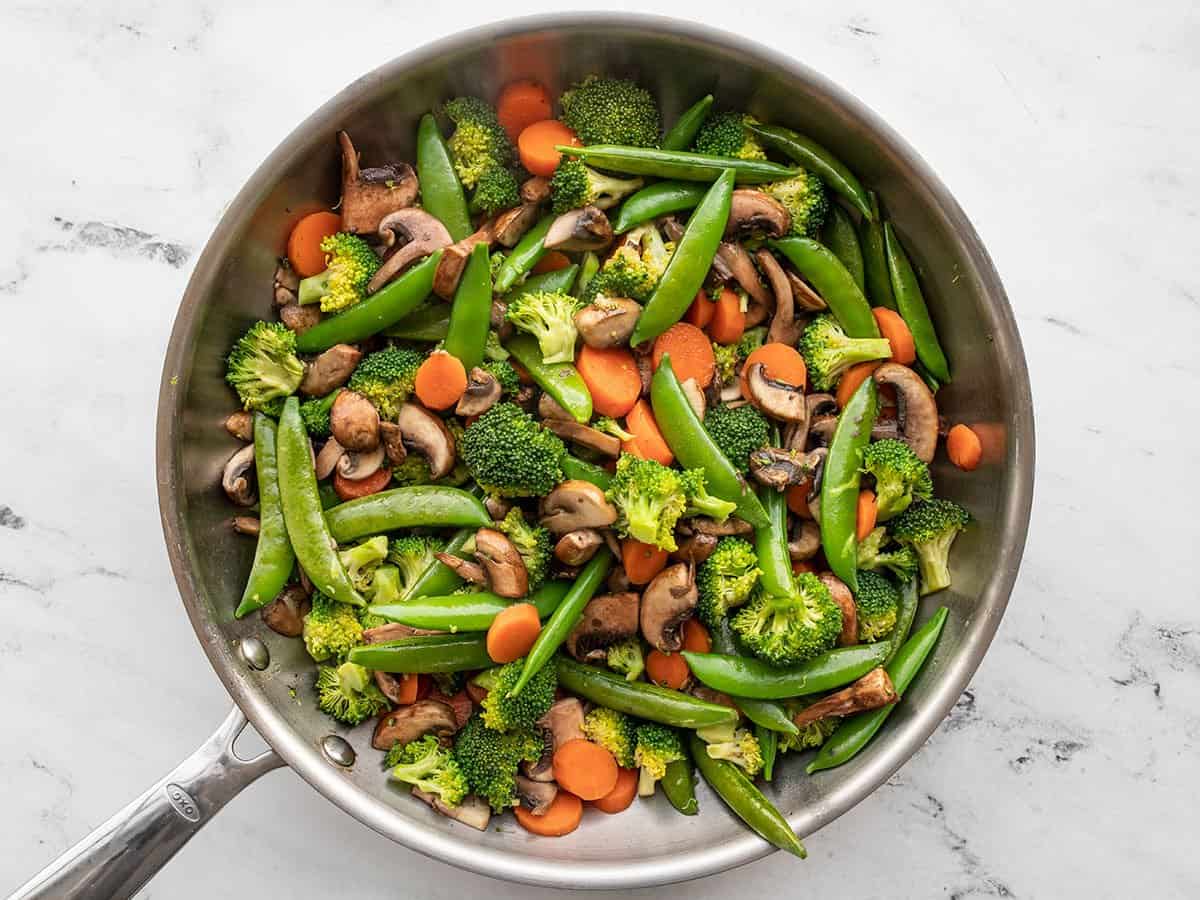
Afterwards, include the vegetables that require less cooking time, such as mushrooms and sugar snap peas. Stir vigorously and cook for approximately 1-2 minutes until the mushrooms show signs of softening. Bear in mind that they will continue to cook as you introduce additional vegetables.

Finally, incorporate your tender vegetables, such as the onion and bell pepper. Give them a quick stir and cook for an additional minute, or until the onions start to become tender. Remember, they will further soften as the sauce is added.
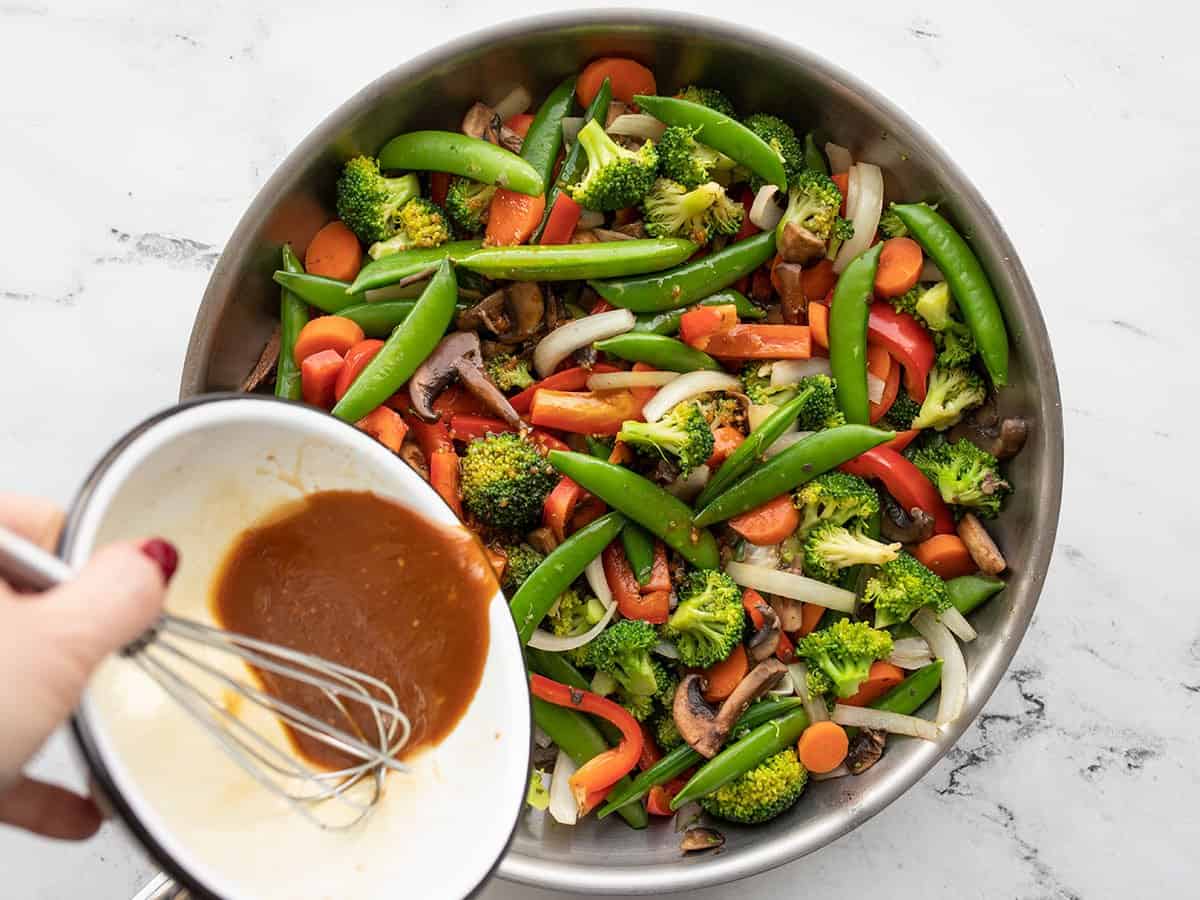
After giving the stir fry sauce a quick stir to mix it well, pour it over the vegetables in the skillet. Stir and cook until the sauce starts to simmer, which will cause it to thicken and become glossy. You can either remove the skillet from the heat or continue cooking until the vegetables reach your desired level of doneness.

Enjoy your stir fry topped with sesame seeds!

Try These Other Stir Fry Recipes:

